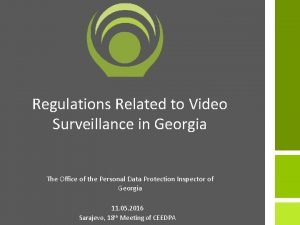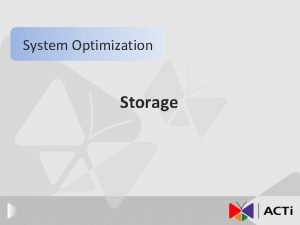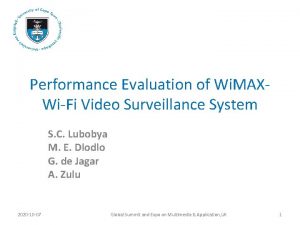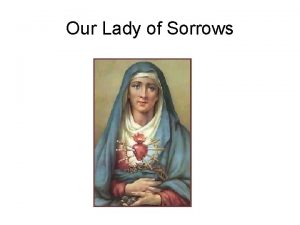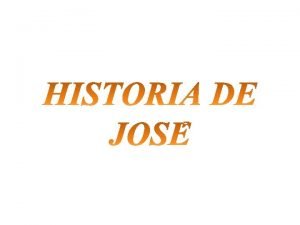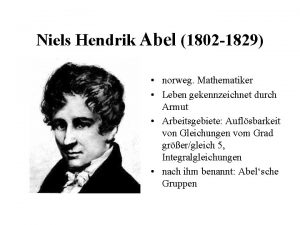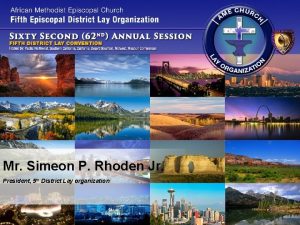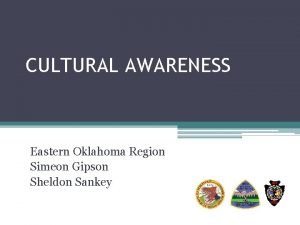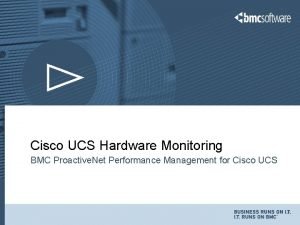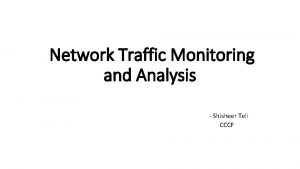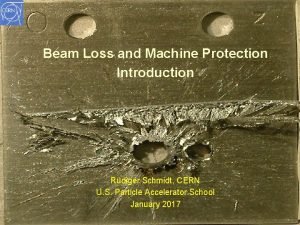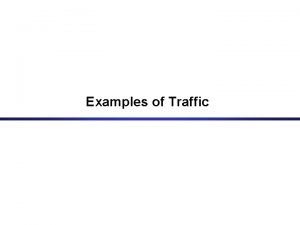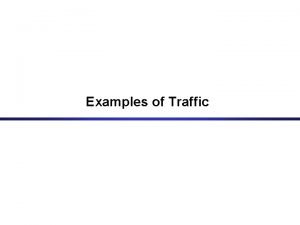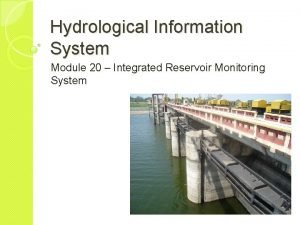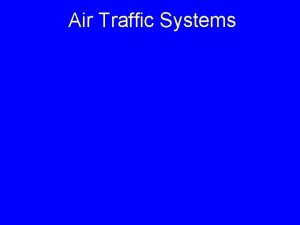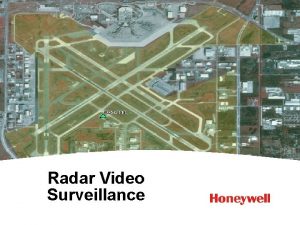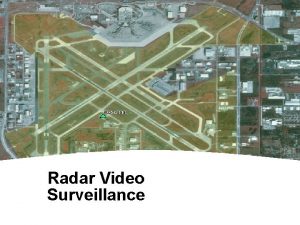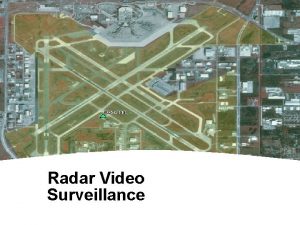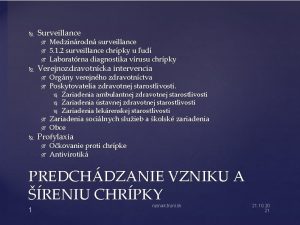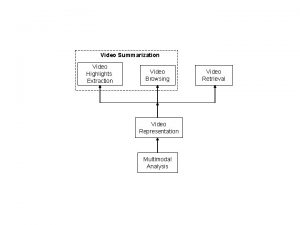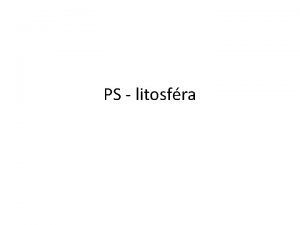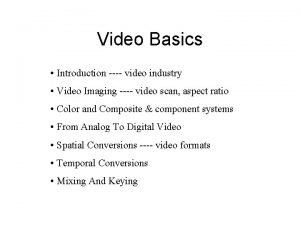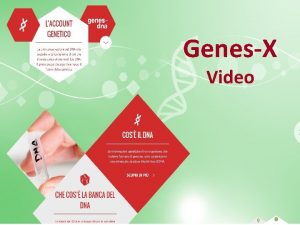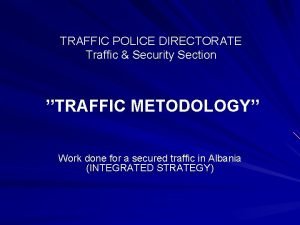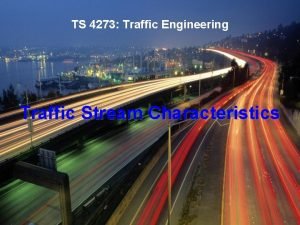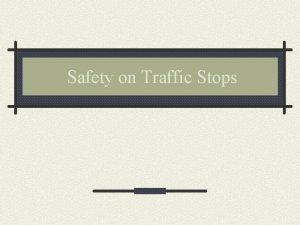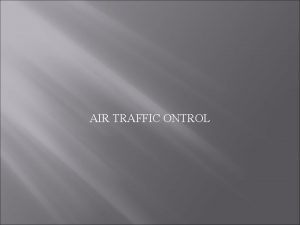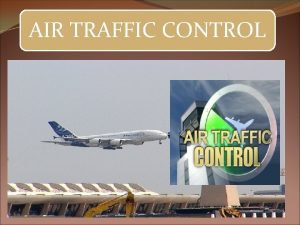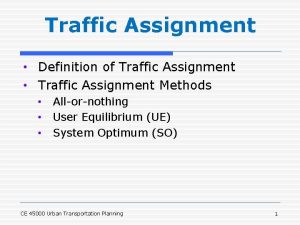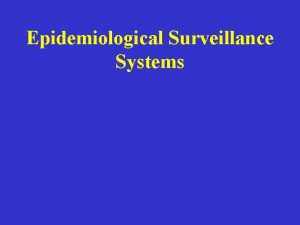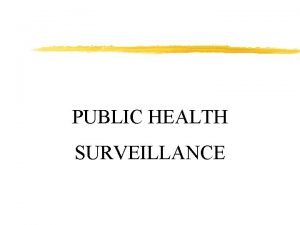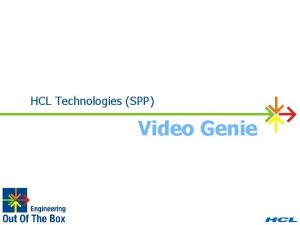Video Surveillance systems for Traffic Monitoring Simeon Indupalli


























- Slides: 26

Video Surveillance systems for Traffic Monitoring Simeon Indupalli 1

Presentation Overview n n n Video surveillance systems. Traffic monitoring issues. Object tracking techniques. Vehicle tracking strategies. A real time system Explanation. Future Work 2

what is video surveillance? n Present Implementations? q q n Advantages of video surveillance? q q n Human detection systems. vehicle monitoring systems. Keep track of information video data for future use. Helpful in identifying people in the crime scenes etc. . Disadvantages of the present system? q q q It’s difficult to maintain heavy amount of raw video data Human interaction. Require higher bandwidth for transmitting the visual data. 3

Video surveillance in the context of Computer Vision n Detection and tracking of moving objects are the important tasks of the computer vision. The video surveillance systems not only need to track the moving objects but also interpret their patterns of behaviours. This means solving the information and integration the pattern. n Advantages n q q q Minimizes the user interaction. Less amount of prohibitive bandwidth. Minimizes the cost and time. 4

Need for Traffic Monitoring n n n To reduce the traffic congestion on highways Reduce the road accidents Identifying suspicious vehicles. Etc. . , 5

The quest for better traffic information, an increasing reliance on traffic surveillance has resulted in a. Vision better Traffic Monitoring in Computer vehicle detection. n Taking some intelligent actions based on the conditions. n n Traffic scene analysis in 3 categories. q q q A strait forward vehicle detection and counting system. Congestion monitoring and traffic scene analysis. Vehicle classification and tracking systems which involve much more detailed scene traffic analysis. 6

Responsibilities of reliable Traffic Monitoring System n n n Adaptive to changes in the real world environments Easy to set up Capable of operating independently of human operators. Capable of intelligent decisions. Capable of monitoring multiple cameras and continuous operation. Reasons for unsuccessful implementation** 7

A Traffic Monitoring System 8

Object Classification n Shape based classification. q q n Image blob area, blob bounding box Classification based on above info. Motion-based classification. q q q Human motion shows periodic property. Time frequency analysis applied. Residual flow taken under consideration. 9

Object tracking strategies (I)* n Background subtraction q q q Difference between the current image and the reference background image in a pixel by pixel fashion. Sensitive to the background changes Wallflower principles for effective background maintenance. 10

n Temporal differencing q Moving objects changes intensity faster than static ones Uses consecutive frames to identify the difference. Adaptive to dynamic scene changes Problems in extracting all relevant features. Improved versions uses three frames instead of two Object tracking strategies (II) q q 11

Object tracking strategies (III) n Optical flow q q q To identify characteristics of flow vectors of moving objects over time. It’s used to detect independently moving objects in presence of camera. Requires a specialized hardware to implement. Optical flow of moving objects Meyer et al 12

Vehicle detection techniques n n Model based detection Region based detection Active contour based detection Feature based detection 13

Vehicle detection technique (I) n Model based Tracking q The emphasis is on recovering trajectories and models with high accuracy for a small number of vehicles. q The most serious weakness of this approach is the reliance on detailed geometric object models. Disadvantage q It is unrealistic to expect detailed models for all vehicles that could be found on the roadway 14

Vehicle detection technique (II) n Region based tracking q q It detects each vehicle blob using a cross correlation function. Vehicle detection based on back ground subtraction. Disadvantage q Difficult to detect the vehicles under congested traffic, because vehicles partly occlude with one another Potential segmentation problem 15

Vehicle detection technique (III) n Active contour based detection q Tracking is based on active contour models, or snakes. q Representing object in bounding contour and keep updating it dynamically. q It reduced computational complexity compared to the region based detection. Disadvantage: q The inability to segment vehicles that are partially occluded remains a problem. Bounding counters 16

Vehicle detection technique (IV) n Feature based detection q q Tracks sub-features such as distinguishable points or lines on the object Effectiveness improved by the addition of common motion constraint. Features are grouped together based on common motion, avoiding segmentation problem due to occlusion 17

A typical vehicle tracking procedure 18

Wallflower Principles & Practice of Background Maintenance. • Moved objects • Foreground capture • Time of day • Stopped car • Light switch • Moving car • Waving trees • Shadows • camouflage • Bootstrapping 19

Wallflower: Three levels of abstraction Pixel level q n n n q Region level n n q Maintains models of back ground of each individual pixel. Processing makes the preliminary classification between foreground and background Dynamic to scene changes. Emphasis is on interrelationship between the pixels Helps to refine raw classification at pixel level Frame level n It watches for the sudden changes in the large parts of the image and swaps in alternative background models. 20

A real time traffic monitoring system Feature based tracking algorithm • Camera calibration • Feature detection • Vehicle tracking • Feature grouping Benjamin Coifman, Jitendra Malik, David Beymer 21

Offline camera definition n Line correspondences for a projective mapping. A detection region near the image bottom and an exit region at the image top And multiple fiducial points for camera calibration Based on the above information the system computes the homography between the image coordinates(x, y) and the world coordinates(X, Y) 22

On-line tracking and grouping n Detector q q n Tracker q q n Detecting corners at the bottom of image, where brightness varies in more than one direction. Detection operationalzed by the points in the image I Uses kalman filters to predict the velocity in the next image. Normalized correlation is used to search the small region of image. Group q q q Grouper uses common motion constraint. Once all the corner features are identified they are grouped together. Monitoring the distance between the point d(t)=P 1(t)-p 2(t) 23

2 Sample feature tracks from the tracker 1 3 Sample corner features identified by the tracker Sample feature groups from the tracker 24

Conclusion & Future Work n The real time traffic surveillance system is still under research due to the background maintenance problem and occlusion. n Better Background maintenance Solving occlusion problem n 25

References: n n n A Survey on visual surveillance of object motion and behaviour – HU et al Transportation research part-c/ A real time computer vision system for Traffic monitoring and vehicle tracking – B. coifman, J. Malik etc. . Steps towards cognitive vision system – H. Nagel, IAKS Karlsruhe. VSAM project – Carneigh Mellon University Wallflower Principles and practices – Microsoft Research group. 26
 Monitoring vs surveillance
Monitoring vs surveillance Georgia law on video surveillance
Georgia law on video surveillance Cafe racer shooting surveillance video
Cafe racer shooting surveillance video Automated video surveillance
Automated video surveillance Video surveillance system
Video surveillance system Video surveillance system
Video surveillance system Our lady of
Our lady of Monah simeon
Monah simeon Ruben simeon levi juda
Ruben simeon levi juda Norweg. mathematiker
Norweg. mathematiker Simeon rhoden
Simeon rhoden Simeon skype
Simeon skype Simeon gipson
Simeon gipson Inbound traffic vs outbound traffic
Inbound traffic vs outbound traffic All traffic solutions
All traffic solutions Cisco ucs performance monitor
Cisco ucs performance monitor Network traffic monitoring techniques
Network traffic monitoring techniques Traffic monitoring devices
Traffic monitoring devices Hdmovie30
Hdmovie30 Hdmovie30
Hdmovie30 Video yandex
Video yandex Yahoo search video
Yahoo search video Searchyahoo
Searchyahoo The frame size of a video refers to the video’s
The frame size of a video refers to the video’s Compliance monitoring kalispell
Compliance monitoring kalispell Nsm network security monitoring open systems
Nsm network security monitoring open systems Reservoir monitoring system
Reservoir monitoring system

